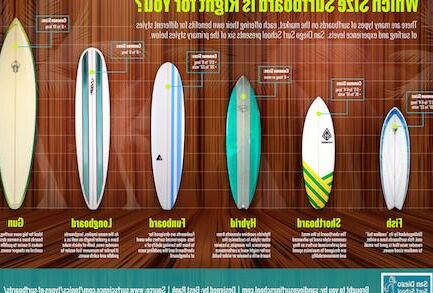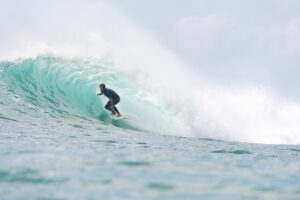Explore the World of Surfboards: Different Types and Their Ideal Use

Surfing is a thrilling water sport that requires skill, balance, and the right equipment. One of the most important pieces of equipment for any surfer is the surfboard. Surfboards come in different shapes and sizes, each designed for a specific type of wave and surfing style. In this article, we’ll discuss the different types of surfboards, their materials, and measurements, and what they are used for.
Types of Surfboards
Shortboard
The shortboard is the most common type of surfboard and is designed for experienced surfers. It is the most high-performance surfboard and is ideal for surfing fast, steep waves. Shortboards are typically made from lightweight materials such as polyurethane foam, fiberglass, and epoxy resin. They range in length from 5’6″ to 7’0″ and are typically less than 20 inches wide. Shortboards have a sharp nose and a pointed tail, which allows for quick turns and speed.
Longboard
Longboards are designed for riders of all levels and are ideal for small waves. They are typically longer and wider than shortboards, with lengths ranging from 8’0″ to 10’0″. Longboards are ideal for cruising and performing stylish maneuvers such as noserides and cross-stepping. They are typically made from materials such as foam, fiberglass, and epoxy resin.
Fishboard
The fishboard is a shortboard with a wider and more rounded nose and tail. They are designed for smaller waves and are ideal for surfers who want to ride with speed and maneuverability. Fishboards are typically made from lightweight materials such as foam, fiberglass, and epoxy resin. They range in length from 5’4″ to 6’4″ and are wider than shortboards, with widths ranging from 19″ to 22″.
Funboard
The funboard is a hybrid surfboard that combines the characteristics of both shortboards and longboards. It is ideal for beginners and intermediate surfers who want to learn how to surf or improve their skills. Funboards are typically longer and wider than shortboards, with lengths ranging from 7’0″ to 8’0″. They are typically made from materials such as foam, fiberglass, and epoxy resin.
Gun
The gun is a longer and narrower surfboard that is designed for surfing big waves. They are typically used by experienced surfers who want to ride waves over 15 feet tall. Guns are typically made from lightweight materials such as polyurethane foam, fiberglass, and epoxy resin. They range in length from 7’0″ to 11’0″ and have a narrow tail and a pointed nose.
Surfboard Materials
Surfboards are typically made from foam, fiberglass, and epoxy resin. The foam core provides buoyancy, while the fiberglass and epoxy resin provide strength and durability. Polyurethane foam is the most commonly used material for surfboard cores, while epoxy resin is the preferred material for surfboard laminates.
Surfboard Measurements
The length, width, and thickness of a surfboard are important factors that determine its performance. Shorter surfboards are more maneuverable and are ideal for fast, steep waves, while longer surfboards are more stable and are ideal for smaller waves. The width of a surfboard determines its stability, with wider surfboards being more stable than narrower ones. The thickness of a surfboard determines its buoyancy, with thicker surfboards being more buoyant than thinner ones.
Conclusion
In conclusion, surfboards come in different shapes and sizes, each designed for a specific type of wave and surfing style. The most common types of surfboards are shortboards, longboards, fishboards, funboards, and guns. Surfboards are typically made from foam, fiberglass, and epoxy resin, with different materials and constructions affecting their performance and durability. The measurements of a surfboard, including length, width, and thickness, also play a crucial role in determining its performance in the water.
Choosing the right surfboard can greatly enhance your surfing experience, whether you’re a beginner or an experienced surfer. It’s important to consider the type of waves you’ll be surfing, your skill level, and your personal preferences when selecting a surfboard. With the right board, you’ll be able to catch more waves, perform stylish maneuvers, and enjoy the thrill of surfing to the fullest.





